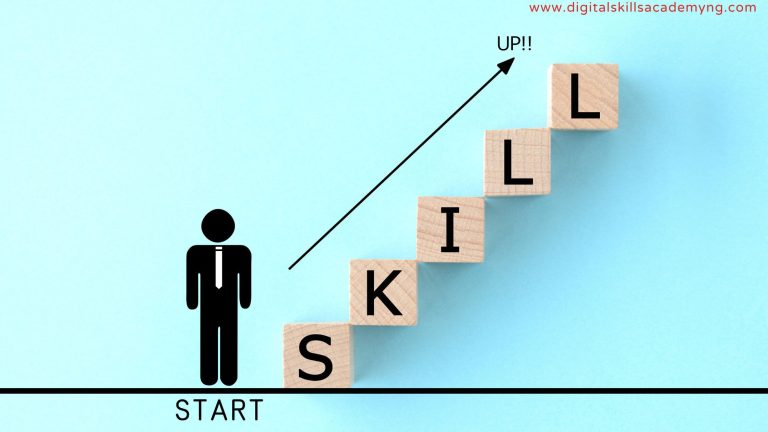20 Important Digital Marketing Terms and Definitions
Digital marketing has revolutionized how businesses reach and engage with their audiences. With the rise of digital platforms, understanding key terms and strategies has become essential for marketers.
It has been a way of communication for marketers and acts as a different strategy for marketing efforts.
Difference Between Marketing and Advertising
Table of Contents
In this blog post, we will explore 20 important digital marketing terms and definitions, followed by an in-depth look at the 7 C’s of digital marketing, which form the foundation of successful online marketing strategies.
20 Important Digital Marketing Terms and Definitions
- SEO (Search Engine Optimization)
SEO involves optimizing a website to rank higher in search engine results pages (SERPs) to increase organic (non-paid) traffic. Key components include keyword research, on-page optimization, and backlink building.
- PPC (Pay-Per-Click)
PPC is an online advertising model where advertisers pay a fee each time their ad is clicked. It’s a way to buy visits to your site, rather than earning them organically. Google Ads is a popular platform for PPC campaigns.
- Content Marketing
This strategy focuses on creating and distributing valuable, relevant content to attract and engage a target audience. The goal is to drive profitable customer action by providing useful information rather than overtly promoting products.
- Social Media Marketing
Using social media platforms to promote products, services, or content. This includes organic activities (posting content) and paid activities (advertising). Platforms like Facebook, Instagram, Twitter, and LinkedIn are commonly used.
- Email Marketing
A direct marketing approach that uses email to communicate with potential and current customers. It is effective for building relationships, promoting content, and driving conversions.
- CRO (Conversion Rate Optimization)
CRO involves improving the percentage of website visitors who take a desired action, such as filling out a form or making a purchase. This is achieved through A/B testing, user feedback, and analytics.
- Analytics
The process of collecting, measuring, and analyzing web data to understand and optimize web usage. Google Analytics is a widely used tool for tracking website performance.
- Keywords
Words or phrases that users type into search engines. Marketers use keyword research to understand what terms their target audience is searching for and optimize their content accordingly.
- Backlinks
Links from one website to another. High-quality backlinks are important for SEO because they signal to search engines that your site is authoritative and trustworthy.
- CTR (Click-Through Rate)
The ratio of users who click on an ad to the number of total users who view the ad. It is a key metric in PPC campaigns to measure the effectiveness of ads.
- Impressions
The number of times an ad is shown to users. This metric helps in understanding the reach of a digital marketing campaign.
- Engagement Rate
A metric used to measure the level of interaction (likes, comments, shares) that content receives from an audience. High engagement indicates that the content is resonating well with the audience.
- Bounce Rate
The percentage of visitors who leave a website after viewing only one page. A high bounce rate may indicate that the content or user experience needs improvement.
- CPA (Cost Per Acquisition)
The cost associated with acquiring a new customer through a marketing campaign. It helps in evaluating the profitability of a campaign.
- ROI (Return on Investment)
A measure of a marketing campaign’s profitability is calculated by dividing the net profit by the cost of the campaign. A higher ROI indicates a more effective campaign.
- Lead Generation
The process of attracting and converting strangers into potential customers. Tactics include content marketing, social media marketing, and email marketing.
- Customer Persona
A semi-fictional representation of your ideal customer based on market research and real data about your existing customers. It helps in creating targeted marketing strategies.
- Remarketing
A strategy that targets users who have previously visited your website but did not complete a desired action, such as making a purchase. It aims to bring them back to your site to convert.
- Influencer Marketing
Collaborating with influencers (individuals with a large following on social media) to promote your products or services. It leverages its credibility and reach to attract potential customers.
- Affiliate Marketing
A performance-based marketing strategy where businesses reward affiliates for driving traffic or sales to their website through the affiliate’s marketing efforts.
What are The 7 C’s of Digital Marketing
The 7 C’s of digital marketing provide a comprehensive framework for developing and implementing successful digital marketing strategies. These principles help ensure that your marketing efforts are uniform, customer-focused, and effective in achieving your business goals.
- Customer
Understanding your target audience is crucial. This involves creating detailed customer personas and understanding their needs, preferences, and behaviors. By knowing your audience, you can tailor your marketing strategies to effectively engage and convert them.
- Content
Content is the backbone of digital marketing. High-quality, valuable content attracts and retains your target audience. It includes blog posts, videos, infographics, social media posts, and more. Effective content marketing addresses the audience’s pain points and provides solutions.
- Context
Contextual marketing ensures your content is relevant to the audience’s current situation or environment. This includes understanding the timing, location, and circumstances in which your audience consumes content. Context helps in delivering personalized and timely messages.
- Community
Building a community around your brand fosters loyalty and engagement. This involves creating a space where your audience can interact with you and each other, such as social media groups, forums, or brand communities. Engaged communities can become advocates for your brand.
- Convenience
The ease with which customers can interact with your brand is critical. This includes having a user-friendly website, seamless navigation, mobile optimization, and accessible customer support. Convenience enhances the overall customer experience and encourages repeat interactions.
- Consistency
Consistency in branding, messaging, and customer experience is vital. It helps in building trust and recognition among your audience. This means maintaining a uniform voice, tone, and style across all digital channels and ensuring your marketing efforts align with your brand values.
- Customer Care
Providing excellent customer service and support is essential for retaining customers and building long-term relationships. This includes timely responses to inquiries, addressing complaints, and offering solutions. Good customer care turns satisfied customers into loyal brand advocates.
How to Integrate the 7 C’s in Your Digital Marketing Strategy
To effectively implement the 7 C’s, follow these steps:
- Conduct Market Research:
Understand your target audience, their needs, preferences, and behaviors. Use this information to create detailed customer personas.
- Develop a Content Strategy:
Create a content calendar that outlines the types of content you will produce, the platforms you will use, and the frequency of posting. Ensure that your content is valuable, relevant, and addresses your audience’s pain points.
- Personalize Your Marketing:
Use data and analytics to deliver personalized messages and offers to your audience. This can include personalized email campaigns, targeted ads, and contextual content.
- Build and Engage Your Community:
Create spaces for your audience to interact with you and each other. Engage with your community by responding to comments, hosting live events, and encouraging user-generated content.
- Enhance Customer Experience:
Optimize your website and digital platforms for user convenience. Ensure your website is mobile-friendly, easy to navigate, and provides a seamless experience across all devices.
- Maintain Consistency:
Develop brand guidelines that outline your voice, tone, and style. Ensure that all your digital marketing efforts align with these guidelines and provide a consistent experience for your audience.
- Focus on Customer Care:
Implement a robust customer support system. Use social media, chatbots, and email to provide timely assistance to your customers. Gather feedback and continuously improve your customer service processes.
How to Manage Difficult Customers
What We Say
Digital marketing is a dynamic and ever-evolving field. By understanding key terms and definitions, and integrating the 7 C’s of digital marketing into your strategy, you can create effective, customer-focused marketing campaigns.
Remember, successful digital marketing is not just about reaching a large audience; it’s about delivering value, building relationships, and fostering loyalty. With the right approach, you can achieve your marketing goals and drive long-term success for your business.




